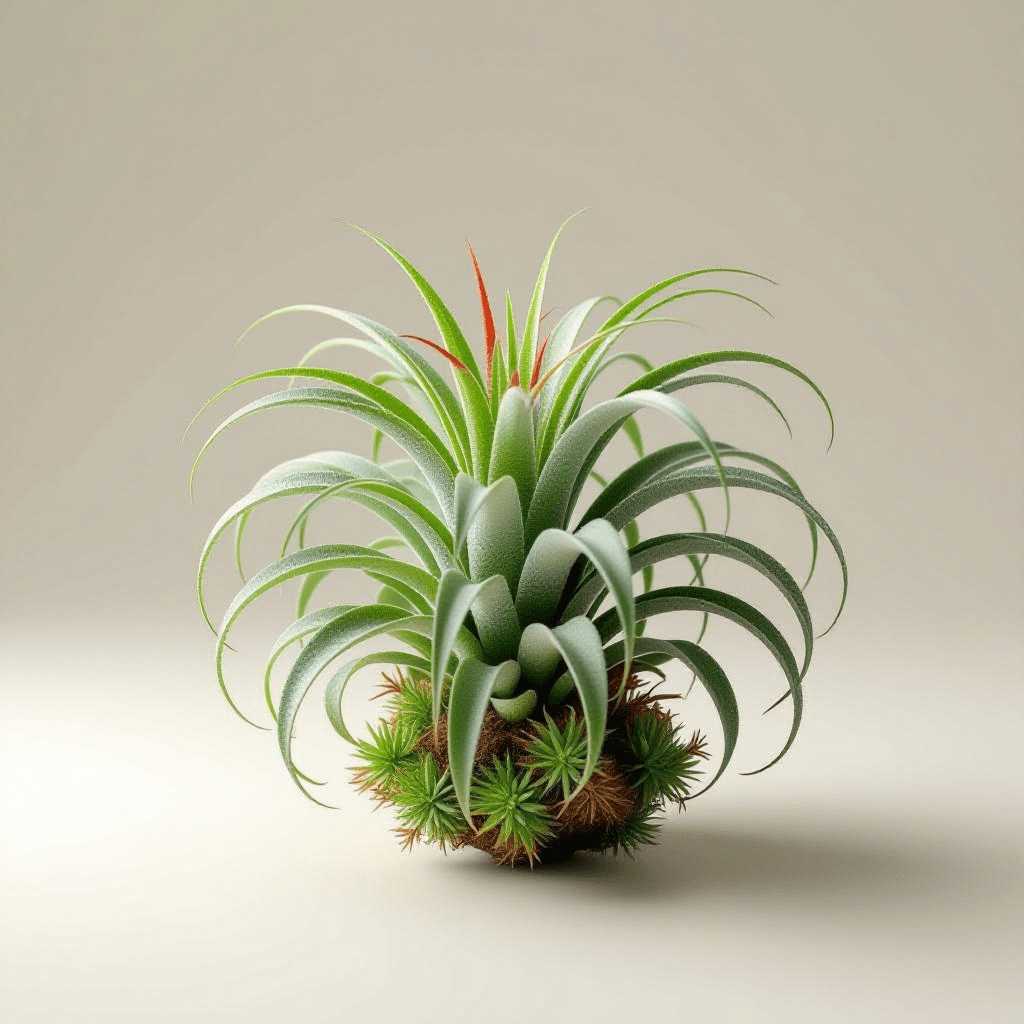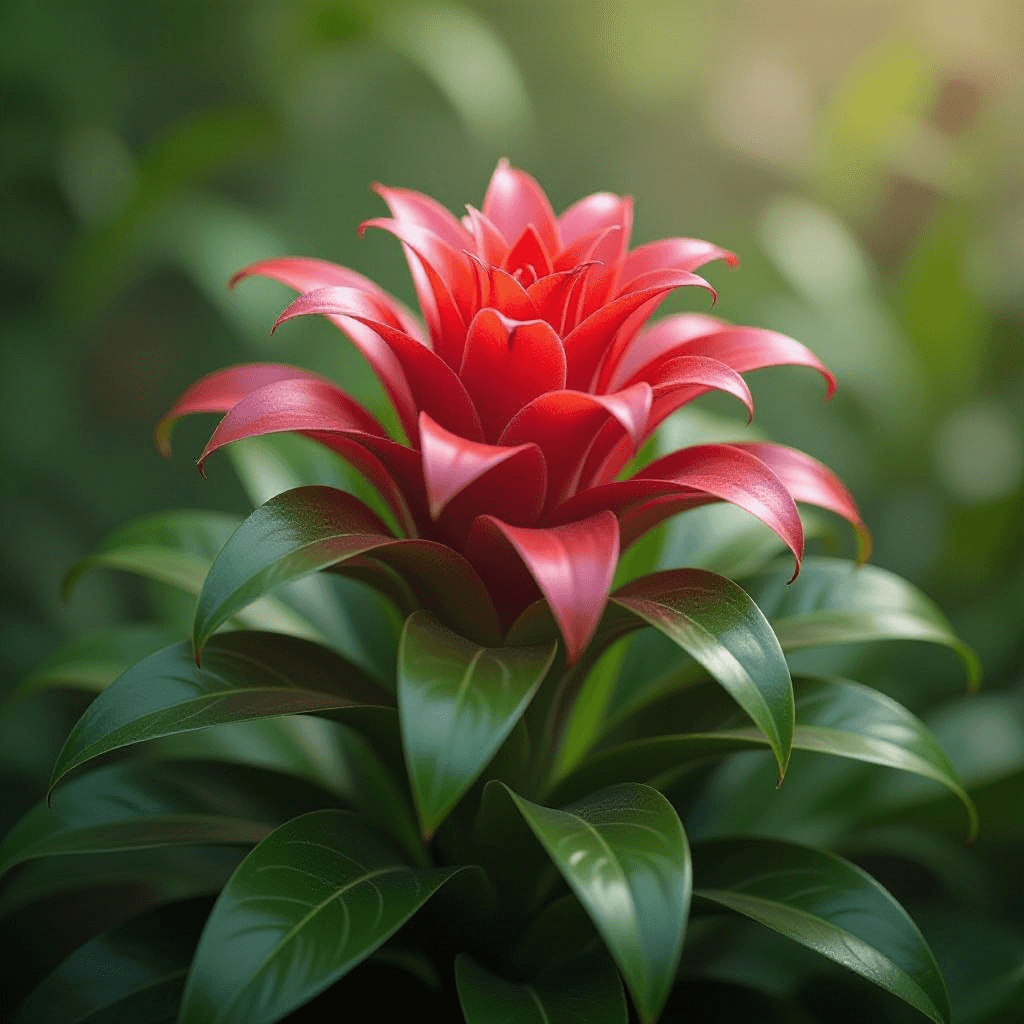Introduction to Air Plants
Air plants, scientifically known as Tillandsia, are unique and fascinating members of the Bromeliaceae family. Unlike traditional houseplants that require soil for growth, air plants have adapted to absorb moisture and nutrients directly from the air through their specialized leaf structures. This distinctive characteristic allows them to thrive in a variety of environments, making them an attractive choice for houseplant enthusiasts.
Originating primarily from the tropical and subtropical regions of Central and South America, air plants exhibit a diverse range of species, each with its own distinct shape, size, and color. Some popular varieties include Tillandsia xerographica, recognized for its stunning silvery foliage and rosette shape, and Tillandsia ionantha, favored for its compact size and vibrant flowering capabilities. The adaptability of air plants has led to their increasing popularity among urban dwellers and gardening enthusiasts alike.
One of the key factors contributing to the appeal of air plants is their low-maintenance nature. Unlike traditional potted plants that often require regular watering, repotting, and care, air plants can flourish with minimal effort. They are well-suited for busy lifestyles or individuals seeking a touch of greenery in their home or office without the burden of extensive maintenance. Their ability to grow in various settings—be it mounted on wood, suspended in the air, or placed in decorative terrariums—further enhances their versatility, making them an excellent choice for a variety of spaces.
In summary, air plants distinguish themselves with their unique growing methods, diverse varieties, and minimal care requirements. As they continue to gain popularity as low-maintenance houseplants, it is clear that they offer a perfect solution for those looking to incorporate greenery into their lives effortlessly.
Essential Care Techniques
Air plants, or Tillandsia, are unique botanical specimens that thrive on minimal care while offering striking aesthetics to any environment. Understanding their fundamental care techniques is crucial for ensuring their longevity and health. The primary elements that significantly affect air plant care include light, water, and temperature.
Light plays a vital role in the growth of air plants. Ideally, they should be placed in bright, indirect sunlight for about 10-12 hours daily. Direct sunlight can be detrimental, leading to scorched leaves, particularly in more delicate species. If natural light is limited, fluorescent lights can serve as a suitable substitute, promoting healthy growth and vibrancy.
Watering techniques are integral to air plant care, with the choice between soaking and misting largely depending on the environment. Soaking is recommended once a week for 20 to 30 minutes. Ensure that the air plants are fully submerged; after soaking, it is essential to shake them gently to remove excess water, preventing rot. Alternatively, misting can be done 2-3 times a week, especially in drier climates. This method involves spraying water on the leaves, allowing for moisture without the risk of water accumulation at the base, which could harm the plant.
Temperature also influences the well-being of air plants. They generally prefer a range of 50°F to 90°F. Sudden temperature fluctuations or exposure to extremes can cause stress, leading to a decline in health. Thus, maintaining a stable environment, along with adequate air circulation, is recommended. Proper air movement helps prevent mold and rot, ensuring the plant receives the well-oxygenated air it craves.
By following these essential care techniques, air plant enthusiasts can create an ideal environment that promotes growth and vibrant health. Whether through proper lighting, consistent watering practices, or maintaining appropriate temperatures, each aspect of care plays a critical role in nurturing these fascinating plants.
Common Problems and Solutions
Air plants, known for their resilience and unique appearance, can still encounter challenges that may affect their health. Identifying common issues is critical for maintaining the vibrancy of these fascinating plants. One prevalent problem is leaf discoloration. This symptom often signals insufficient light exposure. If the leaves appear dull or brown, consider relocating the air plant to a brighter location, allowing it to absorb more indirect sunlight. Conversely, yellowing leaves might indicate overexposure to direct sunlight, necessitating a shift to a slightly shaded area.
Another significant issue is rot, which typically arises from inadequate drying after watering. Air plants require thorough soaking, followed by a drying period to prevent excess moisture retention. To remedy rot, inspect the base and leaves of the plant for any mushy sections. If found, gently trim away the affected areas using sterilized scissors. Thereafter, ensure you provide a well-ventilated environment where your air plants can dry fully post-watering.
Pests, while less common, can also pose a threat to air plants. The most frequent pests include aphids and mealybugs. Regularly inspecting your plants can help detect infestations early. Should you find pests, a mild soap solution can effectively eliminate them without harming the plant. Simply mix a few drops of liquid soap with water and apply it directly to the affected areas. As a precaution, implementing preventative measures such as proper airflow and avoiding overwatering will greatly enhance the plant’s defense against common issues.
By being vigilant and addressing these challenges promptly, air plant owners can ensure their plants remain healthy and vibrant for years to come. Understanding these potential problems empowers individuals to foster a nurturing environment for their unique housemates.
Creative Display Ideas
Air plants, renowned for their adaptability and low-maintenance care, offer exceptional versatility when it comes to display options. Their unique structure and appearance lend themselves beautifully to a variety of creative arrangements, allowing enthusiasts to incorporate them into various settings, from homes to offices. One popular method is using terrariums. These glass-enclosed environments not only provide a visually appealing display but also create a microclimate that can help retain humidity, fostering a healthy growth environment for air plants. Choosing different shapes and sizes of terrariums can add depth and interest to your decor.
Another captivating approach to showcasing air plants is through mounted displays. This technique involves affixing the plants to surfaces such as wooden boards, driftwood, or stone. This method not only highlights the air plant’s natural beauty but also adds a touch of nature to otherwise mundane spaces. Mounting can be done using non-invasive materials, ensuring that the air plant remains undisturbed while allowing it to thrive. The use of colors and textures in the mounting surface can further elevate the overall aesthetic, blending seamlessly with your interior design.
For those who prefer a minimalist approach, consider using simple vessels such as concrete pots, ceramic holders, or even repurposed items like tea cups or jars. These understated displays emphasize the elegance of air plants, drawing attention to their unique forms without overwhelming the surrounding space. To enhance the aesthetic appeal, one can incorporate natural materials like moss, pebbles, or sand, creating a harmonious balance between the air plants and their environment. Ultimately, the possibilities are boundless when it comes to showcasing these fascinating plants. By thinking outside the box and utilizing various materials, you can effortlessly create stunning displays that not only beautify your space but also promote the health of your air plants.


